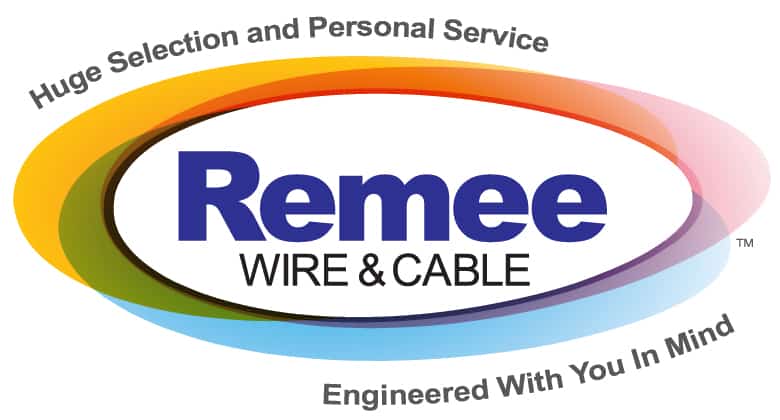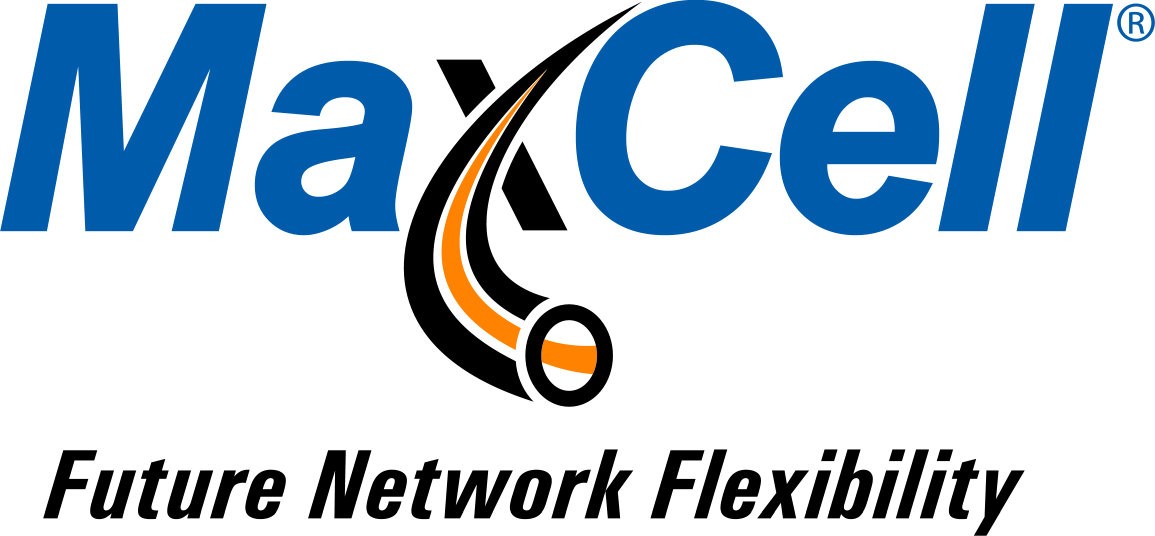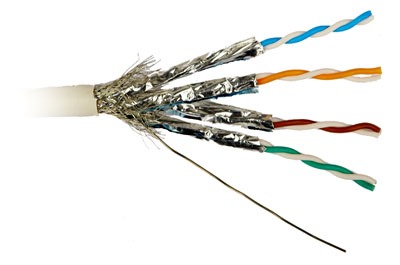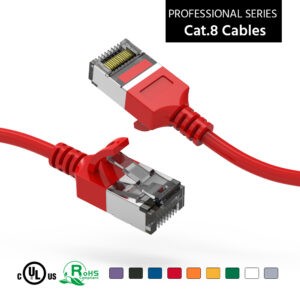CAT 8 Cable Standards and Specifications- TIA/LSZH
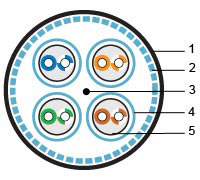
When Ordering- Use: SSTP4-C8-SOLID-OUTDOOR-55
1 – Jacket
2 – Shield-braid
3 – Drain wire
4 – Shield-foil
5 – Solid twisted pair
Shielded Copper cable, 4 pairs, category 7, solid
4 separately foil-shielded pairs
General shield: wire braid
Trunk cable is used for Local Area Networks, indoor/outdoor use, low temperature conditions. The cable is used for high bandwidth digital applications with low BER, high data rates, data processing and information systems
| Meets IEC 61156 requirements and ISO 11801, RoHS 2002/95/EC The cable meets IEC 60332-1 fire safety standard |
| Shielded Copper cable, 4 pairs, category 7, solid 4 separately foil-shielded pairs General shield: wire braid Trunk cable is used for Local Area Networks, indoor/outdoor use, low temperature conditions. The cable is used for high bandwidth digital applications with low BER, high data rates, data processing and information systems. |
| Conductive material: bare copper Conductor insulation: cellular PO The cable jacket: UV-resistant polyethylene (PE), black Shield: every pair is separately shielded with polyester aluminum foil (foil is on the outside), which covers 100% of twisted pair General shield: tinned copper braid – 65% minimum Drain wire: tinned copper |
| Conductor diameter: 0.64 mm (0.03″) (23 AWG) Insulated conductor diameter: 1.56 mm (0.06″) Outer cable diameter: 9.9 mm (0.39″) Drain wire diameter: 23 AWG Minimum bend radius: 120 mm (4,72″) Pulling strength: 14 N max. Operating temperature: -55??C – +70??C (-67??F – +158??F) Weight per 1000 ft (304.8 m): 61,82 lbs (28.04 kg) Copper weight in 1000 ft (304.8 m) of cable: 29,56 lbs (13.41 kg) Standard package: 500 m (1640 ft) |
| Frequency, MHz | Attenuation at 20??C, dB/100m | PS NEXT, dB | NEXT, dB | RL, dB | PS ANEXT, dB | PS ELFEXT, dB | ELFEXT, dB | ||||||
|---|---|---|---|---|---|---|---|---|---|---|---|---|---|
| Typical Value | Cat. 7A | Typical Value | Typical Value | Cat. 7A | Typical Value | Cat. 7A | Typical Value | Cat. 7A | Typical Value | Cat. 7A | Typical Value | Cat. 7A | |
| 1 | 1.9 | 2.0 | 107.0 | 110.0 | 108.4 | 22.0 | 20.0 | 70.0 | 67.0 | 95.0 | 75.0 | 98.0 | 78.0 |
| 4 | 3.4 | 3.8 | 98.0 | 101.0 | 99.3 | 25.0 | 23.0 | 70.0 | 67.0 | 90.0 | 75.0 | 93.0 | 78.0 |
| 10 | 5.4 | 5.8 | 95.0 | 98.0 | 93.4 | 28.0 | 25.0 | 70.0 | 67.0 | 86.0 | 71.0 | 89.0 | 74.0 |
| 20 | 8.0 | 8.2 | 90.0 | 93.0 | 88.9 | 28.0 | 25.0 | 70.0 | 67.0 | 80.0 | 65.0 | 83.0 | 68.0 |
| 30 | 9.3 | 10.1 | 90.0 | 93.0 | 86.2 | 27.0 | 23.8 | 70.0 | 67.0 | 76.0 | 61.5 | 79.0 | 64.5 |
| 100 | 17.5 | 18.5 | 80.0 | 83.0 | 78.4 | 24.0 | 21.1 | 70.0 | 62.5 | 66.0 | 51.0 | 69.0 | 54.0 |
| 200 | 25.4 | 26.5 | 80.0 | 83.0 | 75.7 | 22.0 | 18.8 | 68.0 | 59.8 | 63.0 | 47.5 | 66.0 | 50.5 |
| 200 | 25.6 | 26.5 | 80.0 | 83.0 | 73.8 | 21.0 | 18.0 | 68.0 | 58.0 | 60.0 | 45.0 | 63.0 | 48.0 |
| 300 | 31.5 | 32.7 | 77.0 | 80.0 | 72.4 | 20.0 | 17.3 | 65.0 | 56.5 | 58.0 | 43.0 | 61.0 | 46.0 |
| 600 | 46.3 | 47.1 | 77.0 | 80.0 | 71.2 | 19.0 | 17.3 | 65.0 | 55.3 | 52.0 | 41.5 | 55.0 | 44.5 |
| 900 | 58.4 | 61 | 72.0 | 75.0 | 69.3 | 19.0 | 17.3 | 65.0 | 53.4 | 49.0 | 38.9 | 52.0 | 41.9 |
| 1000 | 60 | 62 | 72.0 | 75.0 | 67.9 | 19.0 | 17.3 | 65.0 | 52.0 | 47.0 | 37.0 | 50.0 | 40.0 |
| 1100 | 64 | – | 72.0 | 75.0 | – | 19.0 | – | 65.0 | – | 45.0 | – | 48.0 | 38.4 |
| 1500 | 71 | – | 72.0 | 75.0 | – | 19.0 | – | 65.0 | – | 39.0 | – | 42.0 | 34.0 |
| Conductor DC resistance at 20??C (68??F) | 57 Ohm/km (91.77 Ohm/mile) |
| Impedance | 100 Ohm |
| DC Resistance Unbalance | 2% max. |
| Insulation resistance | 5 GOhm/km (8 GOhm/mile) |
| Capacitive unbalance | 1,2 pF/m (0.36 pF/ft) max. |
| Propagation delay skew | 25 ns/100 m (7.62 ns/100 ft) max. |
| Dielectric strength | 700 V/min |
| Dielectric strength to shield | 700 V/min |
| SSTP4-C8-SOLID-OUTDOOR-55 | Shilded twisted pair cable (SSTP), 4 pairs, category 8 (1200 MHz), solid, indoor, 22 AWG, UV-resistant PE |
Order CAT 8 Cables

TIA CAT 8 Standards
TR-42.7 Subcommittee, establishing specs for 40-Gbit/sec twisted-pair infrastructure, has chosen CAT 8 as the next generation cabling standard.
Telecommunications Industry Association (TIA) TR-42 Telecommunications Cabling Systems Engineering Committee has approved the ANSI/TIA-568-C.2-1 specifications for Category 8 cabling systems. The document is now awaiting publication and is likely to be available soon. The Category 8 standard document was developed by the TR-42.7 Telecommunications Copper Cabling Systems Subcommittee.
The TR-42 Committee and its subcommittees are meeting the week of June 13-17 in Portland, OR. During the TR-42 opening plenary session on June 13, the TR-42.7 Subcommittee’s report included the news that since the last TR-42 meeting (which was held in late January), the Category 8 standard “has been approved for publication, expected soon.”
Category 8 cabling infrastructure has been designed to support short-distance (between 5 and 30 meters) runs of 25- or 40-Gbit/sec transmission. In October 2015 we published this article titled “Category 8 Questions Answered,” in which we relayed information supplied by several members of TIA TR-42.7. One question we asked was, “What communication or collaboration is taking place between the TIA and the IEEE—particularly the 802.3bq Task Force—to ensure the TIA’s Category 8 specifications are in concert with the IEEE’s 40GBase-T and 25GBase-T specifications?” To that question, CommScope’s Masood Shariff responded, “The IEEE 802.3bq Task Force is collaborating with TIA TR-42.7 and ISO/IEC/JTC 1/SC 25/WG3 to ensure consistency and compatibility of the cabling specifications within the ‘link segment’ specifications in IEEE 802.3bq applications. Liaison letters to clarify requirements or provide additional information are generated at most meetings and latest drafts of the TIA and ISO Category 8 specifications are sent to the IEEE 802.3bq committee, where they are posted in a ‘private,’ password-protected area for members to review and comment. The relationship between the IEEE 802.3bq and its companion cabling standards organizations has been very positive and constructive, with several common members attending the meetings.”
As the IEEE continues to work toward its 25GBase-T and 40GBase-T specifications, the TIA’s Category 8 cabling specs to support those applications are now final. But this significant milestone is not by any means the proverbial end of the line for Category 8 cabling. The next wave of development will be products coming onto the market. We will continue our efforts to stay in close touch with the industry’s suppliers and bring you news of Category 8 component and system introductions.
Why 40GBase-T?
In the introductory portion of his presentation, Vanderlaan answered the question that may be on the minds of many: Why are these groups working on a next-generation Base-T application and the cabling infrastructure to support it? “We believe there are several advantages and a distinct need to provide a twisted-pair solution, even when there already exists a twinaxial solution,” for 40-Gbit/sec transmission, he said. Specifically, he noted, those involved in the efforts believe the establishment of a Base-T system will extend the reach of copper-based 40-Gbit/sec transmission beyond the 7-meter distance capability of the twinaxial-based 40GBase-CX4. This extended distance “will help enable end-of-row configurations in data centers,” Vanderlaan said, adding that support of these end-of-row architectures is particularly important as data centers experience what he termed a “bandwidth explosion.”
Additionally, a Base-T system will occupy a smaller form factor than the existing CX-4, essentially allowing more information to pass through the same physical space than can be accommodated via 40GBase-CX4 today. “We need to be efficient about how we push data through racks,” he said. “Although a bandwidth explosion is taking place in data centers, an increase in square-footage availability is not. Higher data density is important.”
Vanderlaan said that another advantage of establishing a 40GBase-T application and supporting cabling infrastructure is that “it eliminates vendor-specific compatibility issues. If you have a Vendor A switch, a Vendor B cable and a Vendor C switch on the other end of that cable, when they are connected in a Base-T-type system, they talk. There is no requirement to enter in a passcode, or unlock a feature to use non-vendor-specific cordage-as you might have to do with twinaxial. That’s the way it has been in the past and that is the way we are striving to move forward in the future.”
IEEE efforts
The IEEE initiative has passed the call-for-interest stage, with 52 engineers expressing a willingness to work on a 40GBase-T standard. As with other IEEE projects, this effort must meet the five criteria of broad market potential, technical feasibility, economic feasibility, compatibility and uniqueness. The study group that was assembled after the successful call for interest is actively working to satisfy those criteria.
Their focus is on the data center environment. Vanderlaan noted, “We don’t envision a 40GBase-T need within the enterprise in the near future, so the obvious placement of this application is in the data center.” He further explained that with a focus on the data center environment-known in general to have shorter link-length requirements than an enterprise environment such as a commercial office building-the group will explore different possibilities for balancing these three dynamics: the need to reach a certain distance, the need to keep power consumption in check, and the practical ability to manufacture product.
Lessons learned from the development of 10GBase-T include the importance of a reasonable level of power consumption and associated heat generation, as well as how those characteristics affect the ability to package equipment in a certain footprint or form factor. The idea that an initial 40GBase-T solution will specify a reach of less than 100 meters (and perhaps significantly less, to the tune of between 20 and 50 meters) is likely to better facilitate those other dynamics-power consumption/heat generation and the practicality of product manufacture.
CAT 8
While the IEEE works on those goals and objectives with a potential publish date of late 2014 that may well go to 2015, the TIA’s TR-42.7 Subcommittee concurrently sorts out the twisted-pair cabling performance characteristics that will be needed to support 40GBase-T. The official name of the document that is in the initial stages of development is ANSI/TIA-568-C.2-1 Balanced Twisted-Pair Telecommunications Cabling and Components Standard, Addendum 1: Specifications for 100?? Next Generation Cabling.
That’s where Category 8 comes in. During the online seminar, Vanderlaan stated that in a meeting held in early October, the group settled on Category 8 as the name for this next generation of twisted-pair cabling. The Category 8 specification will characterize electrical performance characteristics to 2 GHz. “All electrical parameters have TBD [to be determined] values,” he explained. “Return loss, internal crosstalk, internal power-sum crosstalk and balance” are all characteristics whose performance levels are being discussed within the subcommittee, he added. In addition to what the values for electrical-performance characteristics will be, the manner by which those performance values will be measured at such extended frequencies also is under discussion.
Another point of emphasis that Vanderlaan made was that the alien-crosstalk performance levels initially being proposed-more stringent than those of Category 6A-suggest that Category 8 will be a shielded solution, but unshielded twisted pair has not specifically been precluded. Additionally, initial indications are that the RJ45-style 8-pin modular connector type will remain the standard interface when Category 8 is fully developed.
Vanderlaan also raised an issue with respect to Category 8 and backward compatibility. As previously mentioned, the TIA did not develop a Category 7 standard and is in essence “skipping” 7 as it progresses from Category 6A to Category 8. The ISO/IEC, however, did establish both Category 7 and Category 7A (Class F and Class FA) specifications. And the way it looks, the TIA’s Category 8 will not be backward-compatible with the ISO/IEC’s Category 7. Vanderlaan explained that standards-development groups have always strived to ensure that if an earlier-generation (e.g. Category 6) component is plugged into a later-generation (e.g. Category 6A) system, the system will achieve at least the performance level of the earlier generation (Category 6 in this example). We should not count on that when it comes to the TIA’s Category 8 and the ISO/IEC’s Category 7, he noted.
“Category 8 in its current form breaks the tradition of backward compatibility,” he said. “The internal crosstalk requirements of Category 8 do not satisfy a Category 7 channel.” The practical implication of that fact is that if a Category 7 component is used in a future Category 8 system, the system will not be guaranteed to achieve Category 7 performance.
The issue is particularly peculiar because Category 7 is an ISO/IEC spec, not a TIA spec. So some may position the argument that Category 8, a TIA specification, will be backward compatible with all previous TIA Category specifications. This backward-compatibility situation is “a current issue we need to address,” Vanderlaan said. Another possibility is for the TIA to “redefine what backward compatibility means.”
Again, as Vanderlaan emphasized, these developments are in their early stages and much will be determined in the months ahead. He did say this: “Category 8 will certainly work with all previous applications. It will work with 10GBase-T. It will work with 1G. And if you mix and match components, they will work.”
The presentation covered a significant amount of information, including what has been presented here in this article as well as some detail on the ISO/IEC next-generation efforts, the possibility of a direct-attach Category 8 cabling specification coming from TIA, and observations about the five criteria the IEEE working group is addressing.
As previously stated, the progress of these standards-creation efforts is expected to advance steadily. An interim meeting of the TIA TR-42.7 Subcommittee was scheduled to take place in early December. The TIA, ISO and IEEE continue to work toward the establishment of specifications to enable 40GBase-T transmission in data center environments. ::
PATRICK MCLAUGHLIN is chief editor of Cabling Installation & Maintenance.







